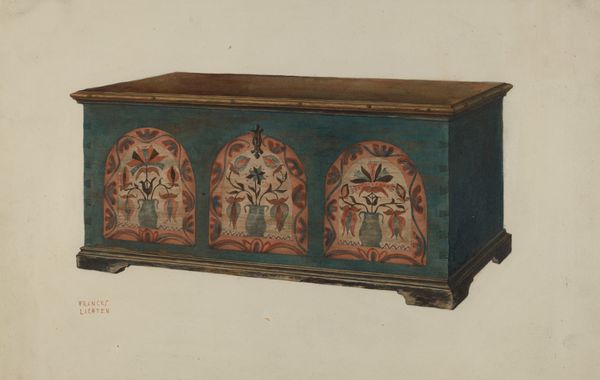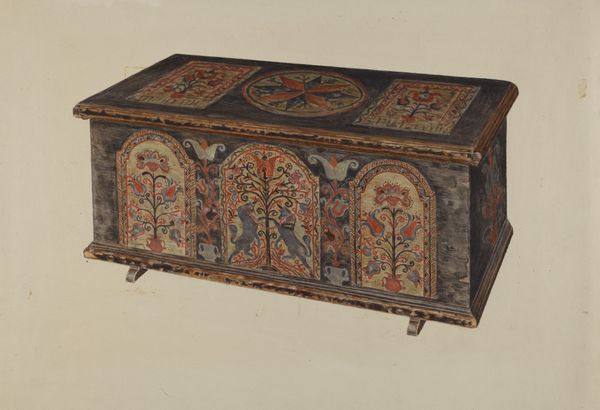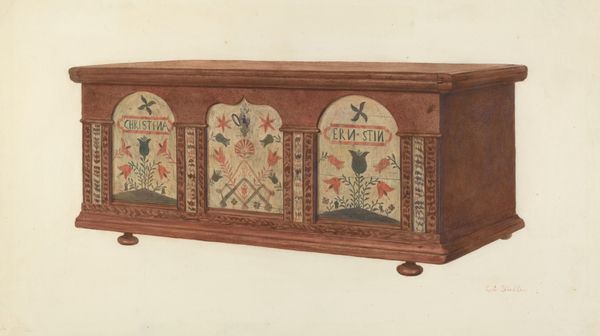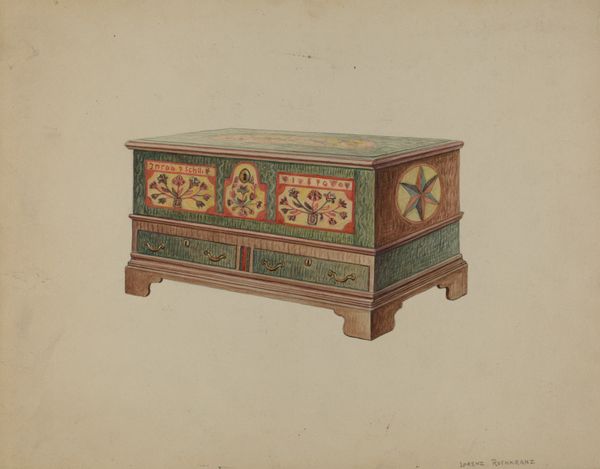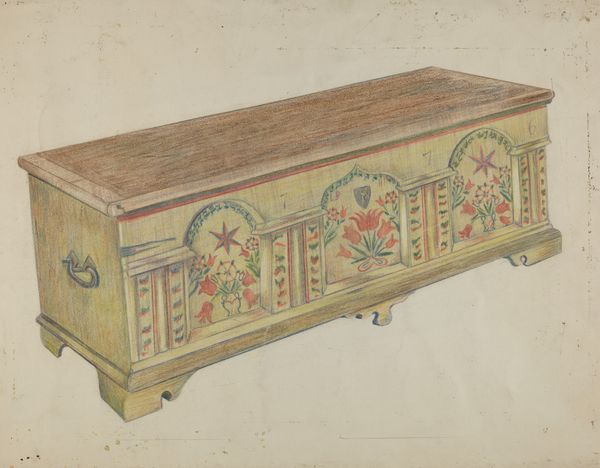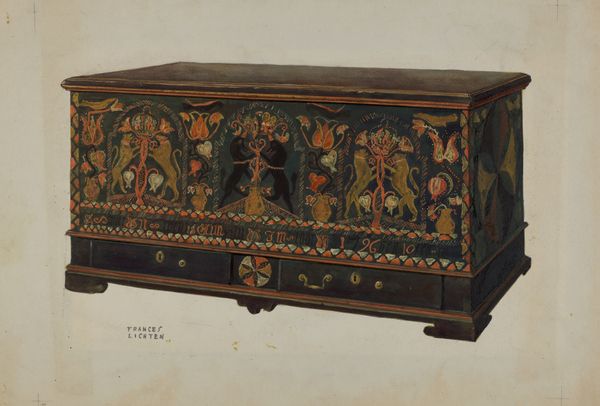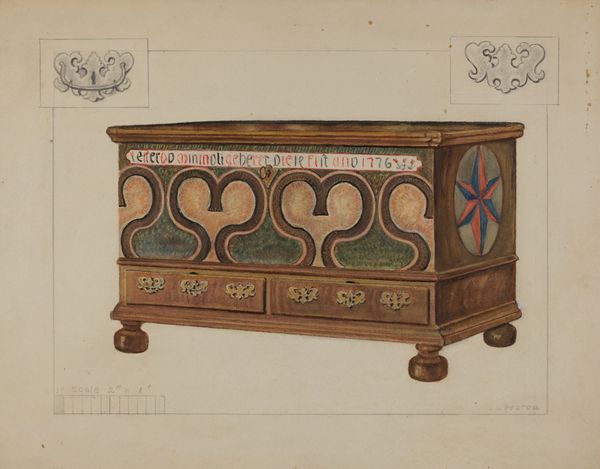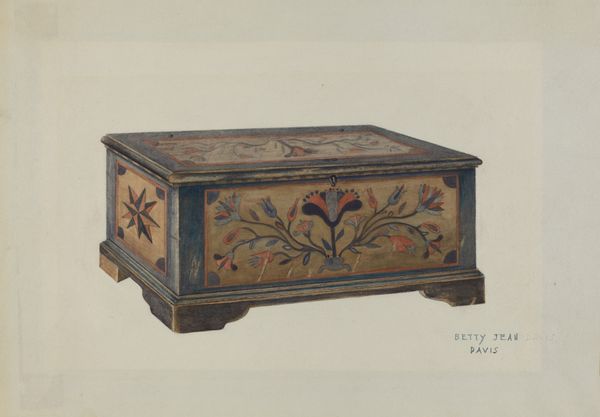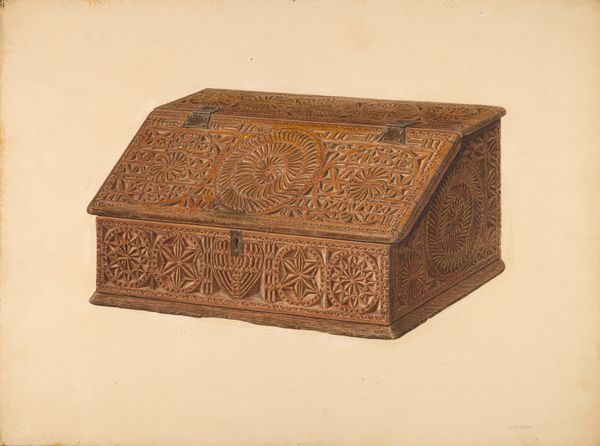
drawing, watercolor
#
drawing
#
charcoal drawing
#
oil painting
#
watercolor
#
folk-art
#
decorative-art
#
regionalism
#
watercolor
Dimensions: overall: 30.6 x 41.2 cm (12 1/16 x 16 1/4 in.)
Copyright: National Gallery of Art: CC0 1.0
Curator: Here we have "Pa. German Chest", a watercolor work from around 1938 by Frances Lichten. What catches your eye first? Editor: The vibrancy, definitely. It's deceptive; you'd expect something of that period to be muted, but this has such a strong presence. It feels handcrafted and not mass-produced. Curator: That tension between 'folk' creation and high art is at the heart of Lichten's work. She spent much of her career documenting Pennsylvania German decorative arts, advocating for its recognition within mainstream artistic discourse. She recognized how the decorative arts spoke to a specific cultural history. Editor: The labor really shines through, doesn't it? I mean, even in this image of a chest, you can see a focus on technique: the detail in the rendering of the wood grain, the precise application of color… each element suggests time and effort—a very conscious making. Curator: Exactly, and it challenges conventional art historical narratives. Lichten's not just interested in the aesthetics; she's attentive to the social role these objects played in their communities, what stories these material objects communicate to future generations about past lives. It represents her keen interest in American Regionalism. Editor: These images of birds and botanicals signal something crucial about how the artists, working from these local areas, sought to imbue these works with life-affirming natural symbolism. It stands in marked contrast to the industrial era—as folk decoration, each piece reflects the unique creativity of the maker in this setting. Curator: That tension between the industrial and the handcrafted really speaks to the historical context, as industrialization advanced into the lives of rural communities throughout America. By documenting it in the way that she did, she advocated for the value of objects considered outside the realms of capital-A Art. Editor: And Lichten reminds us that "art" isn’t just something in a museum, untouched by ordinary hands. It lives in the everyday, doesn't it? Woven into the fabric of life through skill and craft. Curator: It really makes us consider the role of museums, and of art itself, as an apparatus in promoting certain values within our social histories. What kind of traditions do we privilege? And who gets to decide? Editor: The beauty in the practical, yes.
Comments
No comments
Be the first to comment and join the conversation on the ultimate creative platform.
